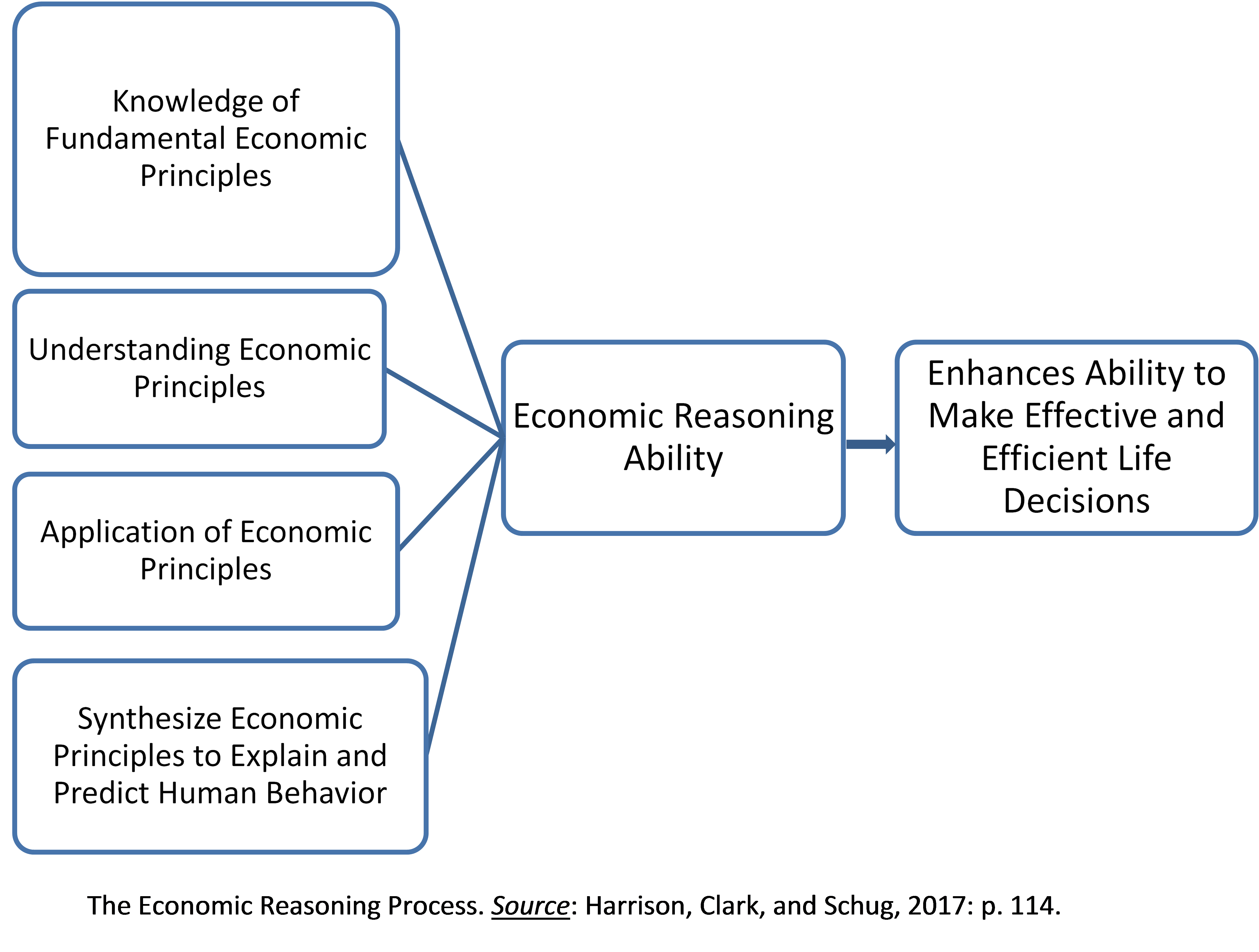Teach-the-Teachers Program Supports the Economic-Reasoning Process
In continuation of my previous blog, which describes how AIER contributes to improving economic education in the United States, I decided to revisit the article “Teaching and Measuring the Economic Way of Thinking,”1 by Ashley S. Harrison, J.R. Clark, and Mark C. Schug.
The authors present the economic-reasoning process depicted in the figure above. In this approach, “instruction in economic reasoning begins with learning fundamental economic principles; continues with an exploration into why the principles hold when tested, or what exception may cause the principle not to hold true; and finally, teaches students how to repeat the exploration process to explain and predict human behavior.” The authors suggest economic reasoning culminates in synthesizing the principles of economics to explain everyday life, and they argue that all four elements contribute to students’ ability to apply economic reasoning to make effective and efficient life decisions.
At our Teach-the-Teachers workshops, we strive to follow this process by making sure teachers understand, apply, and synthesize the concepts of inflation, business cycles, and property rights. During the workshops, we engage participants in the discussion about how these concepts can be used in one’s economic and financial life, and what pedagogical approaches could be utilized when teaching these concepts to students. The research shows that if a teacher knows the subject matter well, has high-quality materials, and knows contemporary instructional techniques, that teacher becomes an effective educator for years to come.
Since we believe in the “teach one, reach many” model, we trust that the participants in our program are able to instill in their students the ability to reason economically and to make effective and efficient life decisions. I sympathize with Harrison, Clark, and Schug when they “feel strongly that the economic way of thinking provides students and teachers with the tools needed to analyze their choices in light of costs and benefits as well as the potential primary and secondary effects of each decision.”
As AIER’s Teach-the-Teachers program continues to impact teachers and students around the country, it is satisfying to realize that our approach follows the highest echelons of economic education.
Notes:
1. In Henning, Mary Beth, ed. 2017. Innovations in Economics Education. New York, Routledge, pp: 103-121.
Click here to sign up for the Daily Economy weekly digest!









